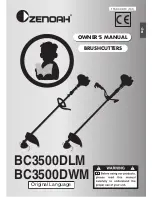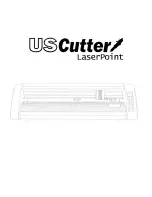
6
3
Compressed Air Supply
Operation
The tool must be connected to a suitable, clean, dry and lubricated workshop air supply (refer
to Figure 2, this is the recommended workshop air supply procedure). It is recommended
that the air pressure measures 90psi at the tool while running free. Water in the air line will
damage the tool. Drain the air tank daily and drain any dryer/filter unit when necessary.
Lubrication:
For first use of the tool, add a few drops of high quality air tool oil to the tool air inlet (
F
). In
use, if an in-line oiler is not installed, add a few drops of high quality air tool oil daily, squirted
into the tool air inlet. Adequate lubrication will help to ensure long tool service life.
Note
: after an air tool has been directly lubricated, oil will discharge through the exhaust port
during the first few seconds of operation. Cover the exhaust port (
E
) with a cloth to collect
this discharged oil.
When tool is not in use, disconnect from compressed air supply.
Regulating the speed:
Refer to
Figure 1
: the speed of the instrument is adjusted
by turning the speed control (
C
) towards LO or HI.
Cutting Wheel Direction: Forward or Reverse:
Refer to
Figure 3
: the cutting wheel direction (forward or
reverse) is set by turning the Forward/Reverse control (
D
)
to the left for forward, or to the right for reverse.
Fig 2
Fig 3
D
Disc / cutting wheel size
3" (75mm)
Horsepower
0.7
Weight
1.1kg (2.4 lbs)
Length
250mm
Guard rotation
360°
Free-speed RPM
16,000
Air inlet
1/4"
Recommended air hose size
3/8" internal diameter
Maximum air pressure
90psi (6.2 bar)
Average air consumption
3.6 CFM
Specifications
75mm cutting wheels are available from Connect Workshop Consumables: (Part No. 30460 -
pack of 5).






















